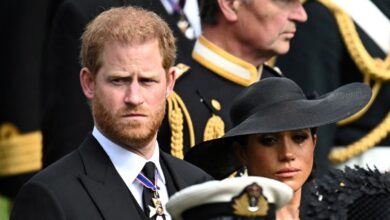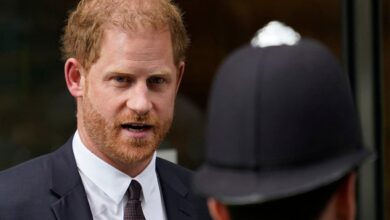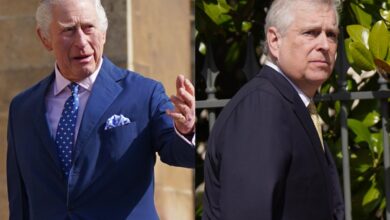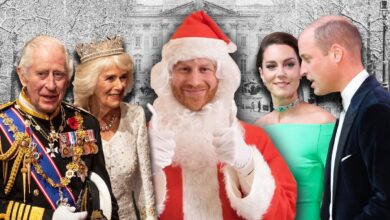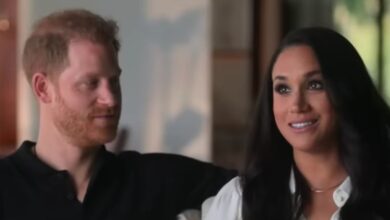Divorced, bewedded, died: What can we learn from the history of royal marriage?

Diana Spencer’s tragedy was to fall in love with Prince Charles. It is still difficult at this distance, and even with all the books, memoirs and documentaries that have chronicled the doomed marriage of the pair, to understand precisely how things went so badly wrong – and how they can evidently still get complicated for those who marry a Windsor.
Was the marriage doomed? It’s hard to conclude otherwise, because the House of Windsor is a tough gig for any prospective spouse. It is almost incompatible with romantic love as conventionally understood by the rest of the population. The divorce rate is extremely high. Of the Queen’s four children, only one – Edward – has never had a failed marriage. Charles, Andrew and Anne were all separated or divorced long before they got near to a significant wedding anniversary.
The marriage of the Queen’s sister, Princess Margaret, to Antony Armstrong-Jones lasted a little longer. As in so many cases, though, it was a husk long before anything formal happened. When the pair divorced, in 1978, it was the first such separation of a “senior” royal in two centuries. Apart from Prince Edward, the Queen is the outstanding exception to the litany of broken relationships, with her marriage to Prince Philip famously lasting almost three-quarters of a century. Even there, though, there were rumours of rifts and dalliances.
There are two things to remember here, for context. Yes, the Windsors can be dysfunctional, but that’s hardly new. Historically, British royal marriages haven’t all been fabulously stable and happy. Adultery and cruelty were almost as common as not, but the general rule was that wronged women (notably those married to the Prince Regent, later George IV, and Edward VII) had to grin and bear it. Divorce was virtually impossible – ironic given the origins of the Church of England and the habits of Henry VIII. By the reign of Elizabeth II it was no longer unthinkable, and the law was changed to make it far smoother.
The second thing to remember is that there are pressures involved in joining “the Firm” that cannot be known until it is too late. Even then, they may not be fully understood. For example, Meghan, Duchess of Sussex, told Oprah Winfrey last year that no one had explained to her what it was going to be like when she married Prince Harry, albeit in part because she didn’t ask: “I didn’t do any research … I didn’t feel any need to, because everything I needed to know, he was sharing with me.”
She continued: “It’s easy to have an image that is so far from reality, and that’s what was so tricky over those past few years, when the perception and the reality are two different things and you’re being judged on the perception but you’re living the reality of it. There’s a complete misalignment, and there’s no way to explain that to people.”
In the early years of her marriage, Diana was also bewildered. In her infamous interview with Martin Bashir in 1995, she reflected on this: “The most daunting aspect was the media attention, because my husband and I, we were told when we got engaged that the media would go quietly, and it didn’t; and then when we were married they said it would go quietly, and it didn’t. And then it started to focus very much on me, and I seemed to be on the front of a newspaper every single day, which is an isolating experience; and the higher the media put you, place you, is the bigger the drop.
“I was very daunted, because as far as I was concerned I was a fat, chubby 20-year-old, and I couldn’t understand the level of interest … no one sat me down with a piece of paper and said: ‘This is what is expected of you.’”
Shortly after being thrust into the limelight, Diana expressed the view that things would be OK because Charles knew all about the royal world and would guide and protect her. How wrong she was. It is fair to say that Charles wasn’t as supportive towards his bride at the beginning of their marriage as Prince William was to Kate Middleton, or Harry to Meghan. Or indeed, as is the royal party in most such marriages.
If the Windsors weren’t uniformly dysfunctional, Prince Charles was. There was also some uniquely bad faith at work. Charles was never going to give up Camilla Parker Bowles, nor she him, despite their sporadic efforts to that end. Some pressure was brought to bear by the Queen and Philip; however, they broadly took the view that, like any other couple, the Waleses would have to sort out their own marriage.
Even if the Queen had been like some warm, empathic agony aunt – Claire Rayner, say, at the time, or Oprah now – there was no way she could have ordered or persuaded Charles to abandon Camilla for good. Elizabeth II can enact laws, appoint prime ministers, dish out knighthoods, and nominally take Britain to war, but she cannot make one human being love or not love another. Especially, it must be said, her stubborn, rebellious, and arguably selfish son.
There is something else the monarch cannot do, and that is control the voracious appetites of the media for gossip, scandal and secrets. To use a topical metaphor, there is a sense in which the House of Windsor and the British tabloid media react to the arrival of a new member marrying into the Firm like an immune system might. At first, the virus is regarded as benign, even magical, adding fresh blood and some sparkle. It was like that with Armstrong-Jones, who actually had a job as a society photographer, and wasn’t one of the landed gentry. It was less like that with Mark Phillips and Princess Anne, but millions still watched their now forgotten betrothal in 1973.
It was, to varying degrees, true of Diana, Sarah Ferguson, Middleton and Markle. Then the media honeymoon comes to an end, and the criticisms begin. The public are invited to take sides, rumours are translated into lurid fact, and, from time to time, the truth turns out to be even more lurid than the rumours. In due course, the interloper gets expelled and returns to obscurity: few now have even heard of Phillips.
There has always been curiosity about the monarchy, and plenty of bad behaviour, but the kind of deference and restraint that protected Edward VIII during his affair with Wallis Simpson in the 1930s has obviously long since disappeared. Today, the most bizarre rumours about the sexual proclivities of “senior royals” can be discovered in 10 minutes on Twitter. Such outrageous stories hardly require an old-fashioned news “peg” to start circulating around the world.
Perhaps the only consistent lesson from the history of royal marriages – whether we’re talking about Diana, or Fergie, or Wills and Kate – is that those involved just have to take their punishment.

